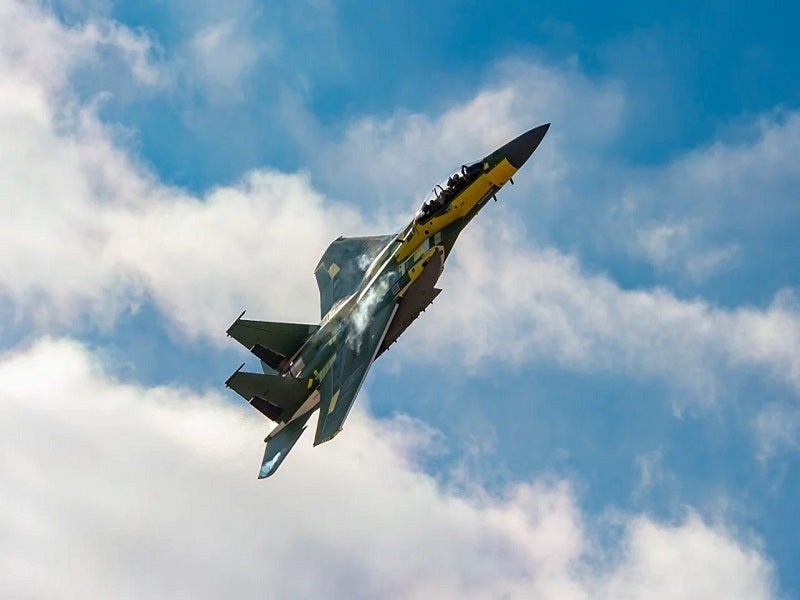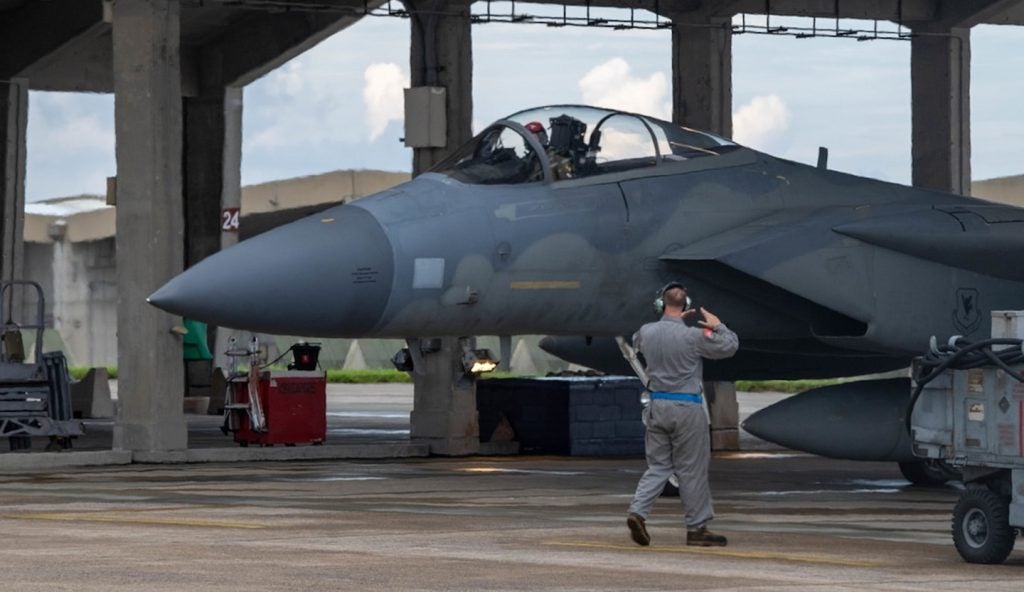Four F-15C ‘Eagle’ fighter jets have departed Kadena Air Base – the so-called “keystone of the Pacific” – for the last time, after more than 40 years of service.
The aircraft are the first of 48 F-15C/D units to leave the US Air Force (USAF) base in Okinawa, Japan, as the service prepares to replace them with 36 F-15EX – or ‘Eagle II’ – units.
This decision was made as part of a wider programme that will cost $10bn to divest enduring combat aircraft and upgrade the USAF fleet stationed across Japan. The service will also gut out ageing F-16s for F-35As at Misawa Air Base, and the air force will also modernise existing F-35B units stationed in the Marine Corps Air Station at Iwakuni.
Notably, there are approximately 54,000 American military personnel dispersed across 85 facilities on Honshu, Kyushu, and Okinawa, making up as much as 77,000 acres of Japanese territory.
The service hinted that some of the departed aircraft will head to the “boneyard” for demilitarisation while others will return to the US to join other Air Force units.
The transition
The F-15C is an all-weather manoeuvrable tactical fighter designed to permit the USAF to gain and maintain air supremacy over the battlefield.
“It’s purely a dominant aircraft with 104 wins and zero losses,” said Staff Seargent Clark Pacay, a pilot in the 18th Aircraft Maintenance Squadron based at Kadena, and crew chief assigned to fly one of the four departed units: the A5095. “To me, the F-15C means a long history of tradition with an undying legacy.”
Meanwhile, the Eagle II shares similarities with the F-15C, however, several upgrades have been made to enhance its multi-mission capability along with its air-to-air defence.

The final flight of the remaining F-15s out of Kadena is yet to be determined.
Major Peter Gawor, director of operations, 67th Fighter Squadron, reflected on what the F-15EX will bring to the future fight, but also on the importance of the F-15C’s legacy.
“The F-15EX will be a new platform with new capabilities. It will give us an incredible edge but it will still maintain the F-15 heritage while simultaneously projecting air superiority in the Pacific region.”
F-15EX and F-35s in Japan
Eagle II is the most advanced variant of the multirole, all-weather, and day and night versions of the F-15 aircraft family, featuring affordability, speed, range, heavy-weapon payload capacity, digital backbone, and open architecture.
The F-15EX provides the capability to carry a large number of missiles in support of the F-35 aircraft and to provide firepower for destroying threats detected by the F-35 during combat operations.
It can launch hypersonic weapons up to 22-feet long, providing an advantage in future near-peer conflicts. The aircraft can be operated by a single pilot and has a payload capacity of 13,300 kilogrammes.









